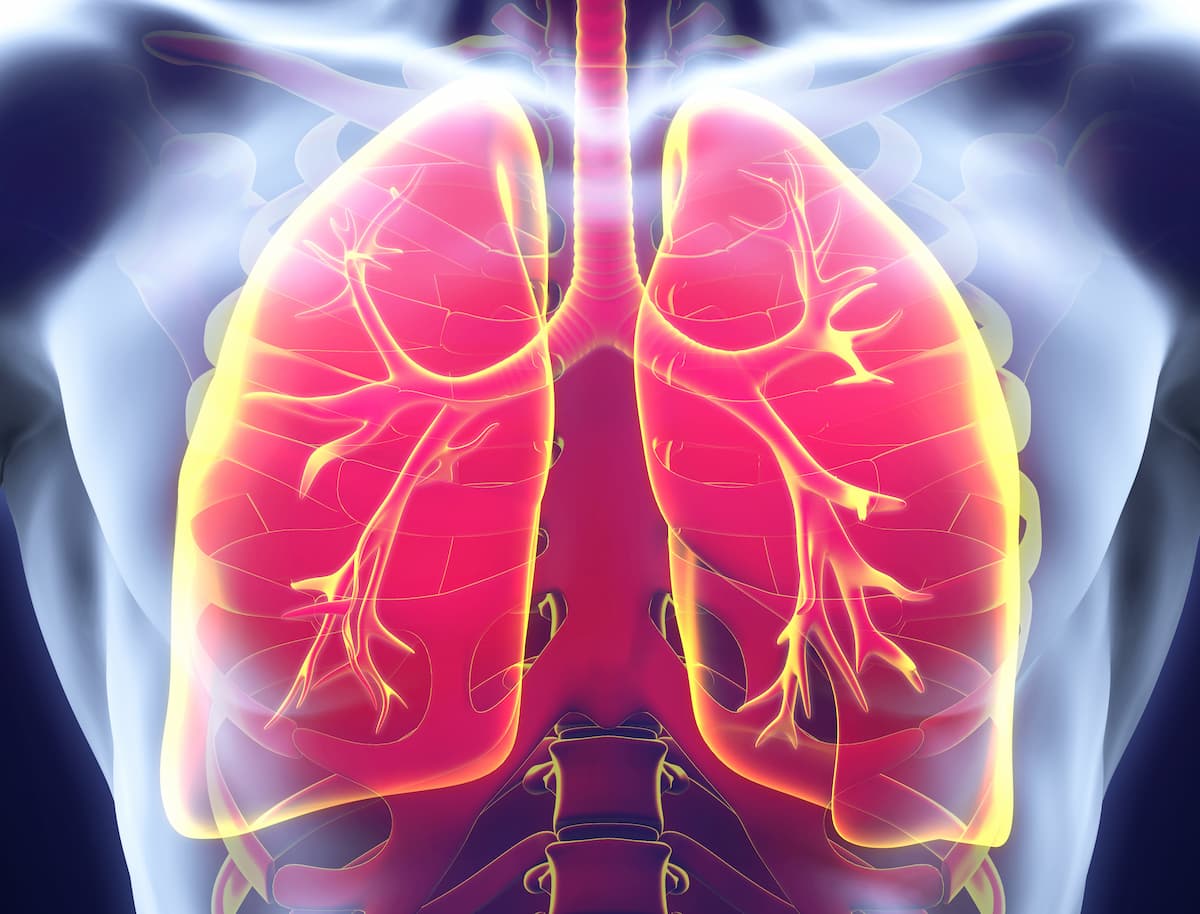Survival Benefit Observed With Targeted Therapies in NSCLC Cohort Study
A cohort study for patients with non–small cell lung cancer found an overall survival benefit when targeted therapies were utilized.
This study was conducted at 3 large hospitals in South Korea. Data from patients who were older than 18 at the time of diagnosis between 2014 and 2019 were utilized in the cohort study.

A cohort study analyzing patients with non–small cell lung cancer (NSCLC) found that improvements in overall survival (OS) were associated with increased use of targeted therapies for those with EFGR and ALK mutations, according to results published in JAMA Open Network.
The OS for patients with EGFR-positive non-squamous cancer was not reached (NR; 95% CI, 35.9 months-NR) between 2017 and 2019 (period 2) and 28.4 months (95% CI, 25.8-30.0; P <.001) between 2014 to 2016 (period 1). For those who had ALK-positive disease, the OS was NR (95% CI, NR-NR) from 2017 to 2019 and 49.5 months (95% CI, 35.1-NR; P <.001) from 2014 to 2016. Of note, there was no significant difference in OS from the first line of treatment for patients with squamous cancer.
This study was conducted at 3 large hospitals in South Korea. Data from patients who were older than 18 at the time of diagnosis between 2014 and 2019 were utilized in the cohort study. The primary end point was OS from diagnosis and from the first line of therapy. Secondary end points were baseline demographics and clinical characteristics.
A total of 22,101 patients were analyzed, with 17,350 having nonsquamous carcinoma and 4751 having squamous histology. For those with nonsquamous cancer with EGFR/ALK rearrangements (n = 13,804), the mean age was 62.2 years, and 50.1% were male. Among those with squamous histology and the aforementioned rearrangements (n = 4751), the mean age was 67.1 years, and 93.2% were male.
Of patients who had nonsquamous histology with EGR/ALK status, 40.5% were wild-type, 52.5% were EGFR-positive, and 7.0% were ALK-positive. A total of 56.6% of patients with nonsquamous cancer had never smoked, including 69.4% in the EGFR group vs 65.0% in the ALK group and 38.5% for the wild-type group. Patients were diagnosed with either stage I (41.2%), II (8.1%), III (12.6%), or IV disease (38.1%).
For those with squamous cancer, 93.2% were male, 51.8% had formerly smoked, and 37.3% were currently smoking. At the time of diagnosis, patients had stage I (24.5%), II (20.6%), III (32.2%), or IV disease (22.7%).
For patients with nonsquamous cancer and EGFR-positive disease, subtypes included exon 19 deletion (43.7%), exon 21 L858R substitution (37.7%), T790M (8.1%), exon 20 insertion (2.7%), and other EGFR variants (7.8%). For those with EGFR-positive squamous cancer, the subtypes included exon 19 deletion (38.8%), exon 21 L858R substitution (24.7%), T790M (9.4%), exon 20 insertion (8.2%), and other EGFR variants (18.8%).
PD-L1 expression levels were significantly different for nonsquamous cancer in those with major druggable targets compared with those without potentially major druggable variants.
Surgery plus systemic anticancer therapy and radiotherapy was the most common initial treatment for 2547 patients with stage IIIA disease during period 1 (34.2%) vs period 2 (30.5%). Patients also received surgery plus systemic anticancer therapy as the second most common form of treatment in period 1 (16.0%) and period 2 (23.9%).
For those with stage IIIB/C cancer, systemic anticancer therapy plus radiotherapy was the most common initial treatment for period 1 (59.1%) and period 2 (55.5%). The second most common was systemic anticancer therapy in period 1 (22.0%) and period 2 (21.4%).
In period 1, 80.9% of patients with EGFR-positive nonsquamous advanced NSCLC received targeted therapy as first-line treatment, and 25.5% received it as second-line treatment. Subsequent therapies after first-line treatment with tyrosine kinase inhibitors (TKIs) included additional TKIs (18.2%), non–platinum-based chemotherapy alone (18.0%), and platinum-based chemotherapy alone (9.1%). For those diagnosed in period 2, 80.9% received a TKI as first-line therapy vs 26.8% in the second line. Additional therapy included TKIs (23.2%), platinum-based chemotherapy (10.9%), and non–platinum-based chemotherapy (4.3%).
During period 1 for those with ALK-positive nonsquamous advanced NSCLC, 58.2% of patients were given platinum-based chemotherapy vs 57.7% who received TKI therapy as second-line treatment. For period 2, 69.3% vs 42.6% were given TKI therapy as first- and second-line treatment, respectively.
For those with squamous advanced NSCLC in period 1, 77.4% were given platinum-based chemotherapy as first-line treatment, and 28.8% had it as second-line treatment. For period 2, 69.5% were given platinum-based chemotherapy in the first line, and 33.8% were given immune checkpoint inhibitors at second line.
Reference
Jung HA, Lee DH, Lim SM, et al. Epidemiology and outcomes of non-small cell lung cancer in South Korea. JAMA Netw Open. 2024;7(2):e2355331. doi:10.1001/jamanetworkopen.2023.55331
Newsletter
Stay up to date on recent advances in the multidisciplinary approach to cancer.